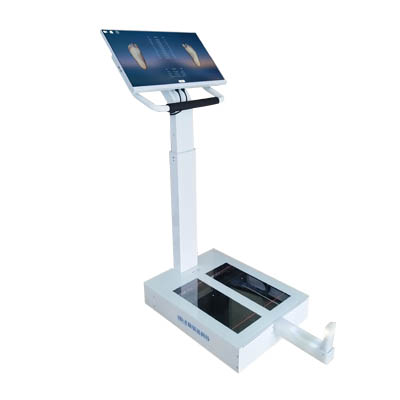
Tel :0755-86131192 86180201
Fax :0755-86180213
E-mail: info@3doe.com
Website: www.3doe.com
Address: 3A05, Minzhi Chamber of Commerce Building, Minzhi Avenue, Longhua District, Shenzhen
Are you here: Home > News > Industry NewsIndustry News
Making orthopedic insole devices - the synergy of plantar 3D scanners and 3D printers
Time:2025-02-12 15:27:25Source:深圳市精易迅科技有限公司Views:732
As a personalized medical aid, orthopedic insoles are widely used in the treatment of foot diseases, prevention of sports injuries and gait correction. The traditional method of making orthopedic insoles relies on manual modeling and mold processing, which is complicated and has limited personalization. With the development of digital technology, the combination of plantar 3D scanners and 3D printers has ushered in a new era of precision and efficiency in the production of orthopedic insoles.

1. The role of plantar 3D scanners
A plantar 3D scanner is a measuring device based on optical, laser or structured light technology that can quickly obtain three-dimensional morphological data of the plantar. Its main functions in the production of orthopedic insoles include:
(1) Accurately obtain plantar anatomical data
A plantar 3D scanner can capture the surface morphology of the foot with millimeter or even micron accuracy and generate a complete plantar 3D model. This precise measurement is of great significance for the identification of arch height, plantar size distribution and deformed parts. Compared with traditional plaster molding or foam box impression methods, the measurement process of 3D scanners is non-contact and deformation-free, which improves data accuracy.
(2) Rapid collection of personalized data
The scanning process usually takes only a few seconds to tens of seconds, and the plantar morphology can be measured in a short time, greatly improving the efficiency of data collection. At the same time, patients do not need to maintain a specific posture for a long time, reducing measurement errors.
(3) Optimizing orthopedic design by combining plantar pressure data
Some plantar 3D scanners can be linked with the plantar pressure test system (Plantar Pressure Plate) to comprehensively analyze the plantar force. For example, based on static scanning and combined with dynamic gait data, orthopedic insoles can be designed more accurately to optimize gait stability and balance plantar pressure distribution.
2. The role of 3D printers in orthopedic insole production
3D printers are devices that use additive manufacturing technology to convert digital models into physical products. In the production of orthopedic insoles, the main functions of 3D printers include:
(1) High-precision personalized manufacturing
3D printers can directly produce insoles based on plantar 3D scanning data, achieving personalized orthopedic insoles that fully meet the patient's foot characteristics. Unlike traditional hand-carving or mold casting methods, 3D printing technology can precisely control the shape, support area and thickness of the insole at the micro level, so as to better meet the needs of different foot shapes.
(2) Multi-material combination optimization function
Modern 3D printers support a variety of material combinations, including soft polymers (such as TPU), hard resins and porous structure materials, so that the insole can provide arch support and ensure comfort. For example, the forefoot area can use high elasticity materials to improve cushioning, while the arch support area can use harder materials to enhance stability. This material partitioning design is difficult to achieve under traditional manufacturing methods, while 3D printing technology can flexibly adjust the material arrangement to improve the orthopedic effect of the insole.
(3) High production efficiency and controllable costs
Compared with traditional mold manufacturing methods, 3D printing can directly manufacture products from digital models without the need for mold opening, which greatly reduces the cost of small batch or personalized production. At the same time, the 3D printing process can adjust parameters according to demand to achieve rapid production and increase the delivery speed of orthopedic insoles.
3. Collaboration process between plantar 3D scanner and 3D printer
The collaboration process between plantar 3D scanner and 3D printer in the production of orthopedic insoles usually includes the following steps:
(1) Plantar data acquisition
The patient stands or walks on the measurement platform of the plantar 3D scanner. The scanner obtains three-dimensional data of the foot and analyzes the plantar force condition in combination with the plantar pressure plate data.
(2) Digital modeling and orthopedic design
The scanned data is processed by computer-aided design software (CAD). Doctors or orthopedic engineers can adjust the shape, support structure and buffer position of the insole according to the patient's foot condition.
(3) 3D printing manufacturing
After modeling, the data is imported into the 3D printer for manufacturing. According to different orthopedic needs, different materials and printing accuracy can be selected to ensure the comfort and functionality of the insole.
(4) Fitting adjustment and optimization
After printing, the patient tries on the insole. The doctor makes fine adjustments based on the patient's feedback. If necessary, the design can be adjusted again and reprinted.




